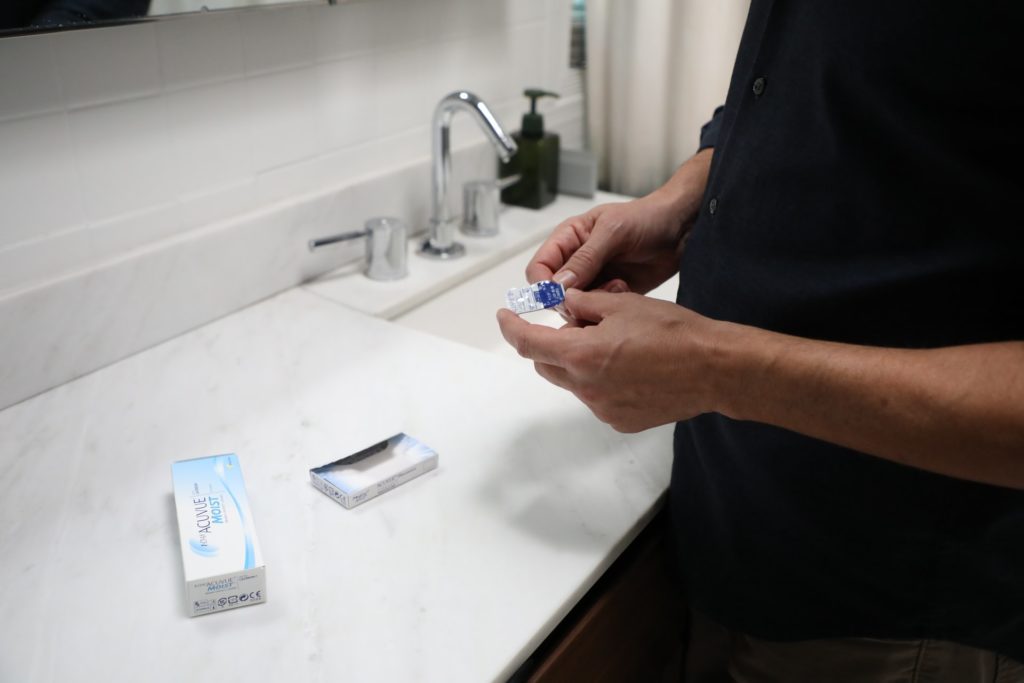Meibomian gland dropout can differentiate, in contact lens-wearers, those who have dry eye disease.

Contact lens hygiene involves washing hands before and after application, limiting hours of daily use, not sleeping or bathing while wearing contact lenses, and ideally using daily lenses that are disposable to prevent eye infections.
If you’re wearing contact lenses, you probably are no stranger to dry eyes—that gritty sensation that makes you blink furiously. Contact lens use can cause dry eye syndrome, which is a clinical condition characterized by a stinging, burning sensation in the eyes, light sensitivity, and watery eyes with a stringy mucus discharge. In fact, up to 50% of contact lens wearers describe symptoms of dry eyes.
Meibomian glands are sebaceous gland on the eyelids that secrete sebum into tears; this sebum makes our tears more resistant to evaporation. Dysfunction of the Meibomian glands is a frequent occurrence in dry eye syndrome. Some of the main changes observed in Meibomian glands (MG) include distortion (bending of the secretory duct) and dropout (gland destruction).
This study aimed to document the morphologic changes in meibomian glands in young individuals (aged 20-28 years) who wore contact lenses and had no other predisposing eye conditions. A study group of individuals who didn’t wear contact lenses were also included as the control group. Measurements were done at the same range of times and by one individual, and the room conditions were kept constant. The outcome measures were as follows: the ocular surface disease index (OSDI), which was from a questionnaire; noninvasive breakup time of tears (NIBUT); MG dropout; the number of distorted MG ducts; and corneal fluorescein staining.
Results showed that in those who didn’t wear contact lenses, MG distortion was significantly higher in individuals who had dry eye disease. Meanwhile, MG distortion was comparable in contact lens wearers, regardless of whether or not they had dry eye disease. In contrast, MG dropout was significantly different between those with dry eye disease and without, whether or not they wore contact lenses. This means that only MG dropout can be used to distinguish patients with dry eye disease versus those without.
This new data is consistent with what we already know about the effects of contact lenses on Meibomian glands. There is the previous observation that contact lens wearers already have decreased corneal sensitivity due to neural adaptation. We also know that contact lens wear accelerates the effects of aging on Meibomian glands, with effects being noticeable as early as after 2 years of use. However, what we have yet to determine is whether the Meibomian glands recover and improve after stopping contact lens use.
Gu, T., Du, B., Bi, H., Zhou, L., Liu, G., & Jin, N. et al. (2020). Meibomian Gland Dropout, not Distortion, Can Distinguish Dry Eyes from Normal Eyes in Contact Lens Wearers. Current Eye Research, 45(8), 897-903. doi: 10.1080/02713683.2020.1731829